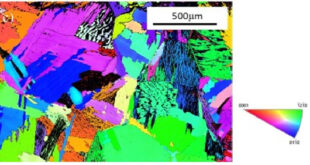Applied Mathematical Modelling, Volume 37, Issues 14–15, 2013, Pages 7778-7788.
Mohammad Taghi Shervani-Tabar, Meysam Sheykhvazayefi, Morteza Ghorbani.
Mechatronics Engineering Program, Sabanci University, Orhanli, Tuzla, Istanbul 34956 Turkey, Email: [email protected] and
Faculty of Mechanical Engineering, University of Tabriz, Tabriz, Iran
Abstract
This paper investigates the fuel spray behavior and variation of the spray characteristics under different injection pressures in internal combustion engines. In diesel engines the fuel spray is affected by the cavitation phenomenon which occurs in the injector orifice. The cavitation is one of the important phenomena which has a significant effect on the fuel spray characteristics. In this paper, for a specified geometry of the nozzle and the combustion chamber, the effect of the cavitation phenomenon on the spray characteristics, i.e. spray penetration length, the Sauter main diameter and evaporation are studied numerically for different values of the injection pressures. High injection pressure causes high velocity of the fuel in the injector orifice which leads to an effective atomization process with small and dispersed fuel droplets. The fluid flow equations are calculated in the combustion chamber to obtain the spray model. Since it is known that, high injection pressure together with low discharge pressure leads to creation of cavitation phenomenon inside the injector orifice, then for having cavitation phenomenon inside the injector orifice and consequently for investigating the cavitation phenomenon effects on the spray characteristics, the injection pressure values of 10–150 MPa are considered while the discharge pressure remains constant. The injector and combustion chamber are simulated in separated regions and the results of the outlet of the nozzle are used as the boundary conditions for solving the fuel flow inside the combustion chamber to achieve the spray simulation. The results of this study show that by increasing the injection pressure, the value of the spray penetration length increases and the Sauter main diameter decreases for constant discharge pressure. The Hydraulic Flip phenomenon occurs after the injection pressure of 120 MPa on the base of the results of this work.
 Advances in Engineering Advances in Engineering features breaking research judged by Advances in Engineering advisory team to be of key importance in the Engineering field. Papers are selected from over 10,000 published each week from most peer reviewed journals.
Advances in Engineering Advances in Engineering features breaking research judged by Advances in Engineering advisory team to be of key importance in the Engineering field. Papers are selected from over 10,000 published each week from most peer reviewed journals.

